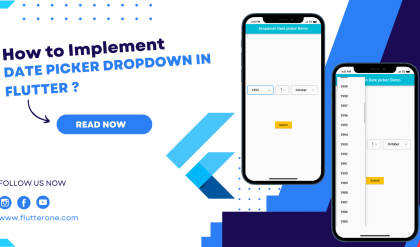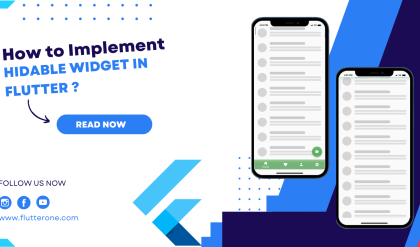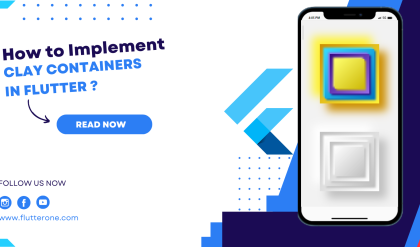Understanding Flutter’s Project Structure
When working with Flutter, understanding the project structure is essential for building well-organized and maintainable applications. Let’s dive into the key directories and files in a Flutter project and explore how they contribute to the overall structure.
1. android/ and ios/ Directories
The android/ and ios/ directories contain platform-specific code for Android and iOS, respectively. These directories are generated when you create a Flutter project and are used to hold the necessary configuration files and native code. You may rarely need to make changes to these directories unless you’re working on platform-specific integrations or modifications.
2. lib/ Directory – The Core of Your Flutter Code
The lib/ directory is where the majority of your application’s code resides. It holds the Dart files that define your app’s functionality, screens, and business logic. Here’s an overview of the main components within the lib/ directory:
main.dart – The Entry Point
The main.dart file serves as the entry point of your Flutter application. It typically contains the main() function, which is the starting point of your app’s execution. Here’s an example:
import 'package:flutter/material.dart';
void main() {
runApp(MyApp());
}
class MyApp extends StatelessWidget {
@override
Widget build(BuildContext context) {
return MaterialApp(
title: 'My Flutter App',
home: MyHomePage(),
);
}
}
class MyHomePage extends StatelessWidget {
@override
Widget build(BuildContext context) {
return Scaffold(
appBar: AppBar(
title: Text('Home'),
),
body: Center(
child: Text('Welcome to my Flutter app!'),
),
);
}
}
In this example, the main() function initializes the app by calling runApp() with an instance of MyApp, which extends MaterialApp. It sets up the app’s title and sets MyHomePage as the initial screen.
Organizing Screens with screens/
The screens/ directory is commonly used to organize your app’s screens or UI components into separate files. By separating screens, you can easily manage and maintain each screen’s code in isolation. For example, you can have separate files for the login screen, home screen, settings screen, and more.
Defining Data Models in models/
The models/ directory is often used to define data models or classes representing the structure of your application’s data. Data models help encapsulate data and provide a structured representation for easier manipulation and management. Here’s an example of a User model:
class User {
final String id;
final String name;
final int age;
User({
required this.id,
required this.name,
required this.age,
});
}
In this example, the User class represents a user object with properties like id, name, and age. You can create other models for different data entities in your app.
Utilizing utils/ for Reusable Code
The utils/ directory can be used to store utility classes, helper functions, or reusable code snippets. This directory helps keep your codebase organized and allows you to easily locate and reuse common functionality across your application. Here’s an example of a DateUtils class within the utils/ directory:
class DateUtils {
static String formatDateTime(DateTime dateTime) {
// Code to format DateTime as a string
}
static DateTime addDays(DateTime dateTime, int days) {
// Code to add days to DateTime
}
}
In this example, the DateUtils class provides static methods for formatting a DateTime object as a string and adding days to a DateTime object.
Building Reusable UI Components in widgets/
The widgets/ directory is used for creating reusable UI components or custom widgets. By isolating these components, you can easily reuse them throughout your application and maintain a consistent look and feel. Here’s an example of a custom ButtonWidget:
import 'package:flutter/material.dart';
class ButtonWidget extends StatelessWidget {
final String text;
final VoidCallback onPressed;
ButtonWidget({
required this.text,
required this.onPressed,
});
@override
Widget build(BuildContext context) {
return ElevatedButton(
onPressed: onPressed,
child: Text(text),
);
}
}
In this example, the ButtonWidget is a reusable UI component that takes a text parameter for the button label and an onPressed callback to handle button presses.
3. pubspec.yaml – Managing Dependencies and Assets
The pubspec.yaml file is the central configuration file for a Flutter project. It manages the project’s dependencies, assets, and other configurations. Let’s explore its main features:
Managing Dependencies
In the dependencies section of pubspec.yaml, you can specify the external packages required by your project. You can add packages, specify version constraints, and manage dependencies efficiently. Here’s an example:
name: my_flutter_app
description: A sample Flutter app
dependencies:
flutter:
sdk: flutter
cupertino_icons: ^1.0.2
http: ^0.13.3
dev_dependencies:
flutter_test:
sdk: flutter
flutter:
assets:
- assets/images/
- assets/fonts/
fonts:
- family: Roboto
fonts:
- asset: assets/fonts/Roboto-Regular.ttf
weight: 400
- asset: assets/fonts/Roboto-Bold.ttf
weight: 700
In this example, we have added cupertino_icons and http as dependencies for our Flutter project.
Handling Assets
The flutter section of pubspec.yaml allows you to define and manage your project’s assets, such as images, fonts, and other static files. You can specify directories or individual files as assets and access them within your code. Here’s an example:
flutter:
assets:
- assets/images/
- assets/fonts/
In this example, we have defined two asset directories, assets/images/ and assets/fonts/, to include in our app. These assets can then be accessed within the code using relative paths.
Conclusion
Understanding the project structure is crucial for developing Flutter applications efficiently. By leveraging the appropriate directories and files, you can organize your code, separate concerns, and build maintainable and scalable Flutter projects.
Feel free to customize and adapt this structure based on your project’s specific needs and preferences. Happy Fluttering!






